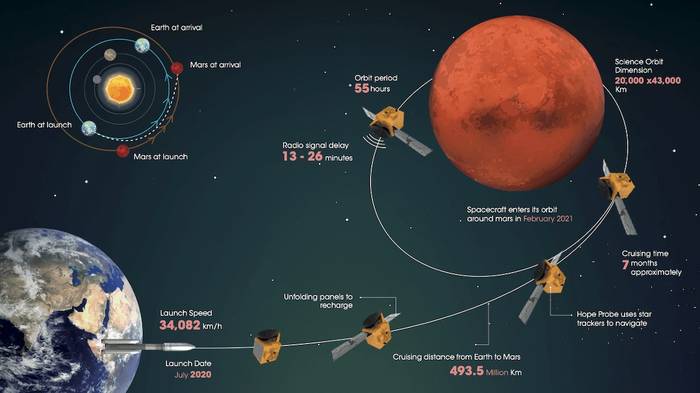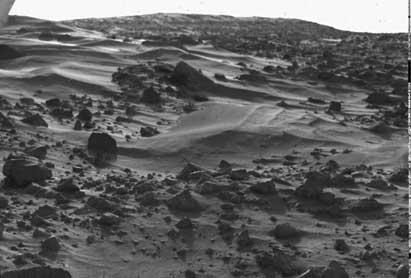Operation of space
2021/12/01 Garcia Pena, Virginia - Astronomoa. Aranzadi Zientzia Elkartea | Garate Lopez, Itziar - EHUko Zientzia Planetarioen Taldeko doktoregaia
_1.png) 400
400
“We are in a political-economic war in astronautics”
Virginia García Pena
[Astronomer]. Aranzadi Science Society
When did the conquest of space begin? If we look romantic – astronomers like this point of view very much – since the human being is conscious, he has since looked to heaven to understand the changes that occur up there. The first big leap in astronomy, and in one way in the conquest of space, took place in 1609, when Galileo first pointed to the sky with his telescope.
The next big leap was made with astronautics. Observing from the earth has great limitations and going out into space opens up many possibilities. But what was that step?
War context for astronautics
The first object that was put into orbit was the Sputnik satellite. Sputnik came into space since the Soviet Union's initiative in the middle of the cold war, during a demonstration of its power. But America. It wasn't very far behind, and who we asked, you can say that the first object in orbit was not the Sputnik satellite, but a lid of a sewer. And so we got to Operation Plumbbob.
Between May and October 1957, the U.S. conducted 29 nuclear tests in the Nevada desert, including the Pasccal-A, on 26 July. Pascal-A is the first underground nuclear detonation conducted at 150 meters. In this test, astrophysicist Robert Brownlee decided to place on the hole a lid of a sewer with high-speed cameras to measure the speed of the lid at the time of the explosion. This was the explosion, that the lid appeared just and partially on a photogram and with this data he could not measure the speed.
An object needs a minimum speed of 11.2 km per second to abandon the gravity of the Earth. It is believed that this lid exceeded this speed six times. And it's never been found. Did Earth come out of the planet? Is it still somewhere in the Nevada desert? In any case, it is clear that it was conducted in a war context. However, astronomy has taken advantage of these advances to continue its research.
ISS, call for collaboration
With the change of the cold war and the political situation, in May 1991 the British Helen Sharman visited the Russian station Mir and in June 1992 George H. W. Bush and Boris Jeltsin agreed to join forces in space exploration. We know what happened from there: this agreement was the first step of the current ISS (International Space Station), which now allows 17 countries to participate in this project. In addition, space agencies collaborate in several missions by sending space probes to different locations in the solar system or by placing telescopes in space.
Cooperation, competition and the future
Today we are in another war: the political-economic war. China has its own program and its own space station, it has announced that Russia will leave the ISS within five years to build its own station, and Israel and Saudi Arabia have made their own launches to the Moon and Mars.
We also have the struggle of private companies: SpaceX, with its Starlink program, will orbit 42,000 satellites to give the Internet to the entire planet. Samsung and Amazon will do the same. All this will have consequences: they will alter the natural conditions of heaven forever and condition the astronomical observations made from the Earth.
What's more, the conflict between SpaceX and Blue Origin stops the Artemis Platform program for a complaint by Jeff Bezos. What is the future of astronomy if left to private companies?
"Legislation is needed to reduce the space activity of private companies"
Itziar Garate López
Astrophysicist. Planetary Science Group (UPV)
Right now turning to Mars, there are eight orbiters, and on its surface, there are three vehicles and a stable robot. For the first time there's a little helicopter. And yet, it's not enough. Because a robot is not a person. He has no intuition, so his decisions are limited. Moreover, the orders issued from Earth take an average of 10 minutes to reach Mars and the confirmations of compliance with the orders to return to Earth so many others. So a robot is slow. If we could send astronauts to Mars, science would advance a lot in a short time.
Harnessing knowledge
The resources necessary for this (oxygen, water, food, medical and hygienic products, fuel, protection against cosmic radiation...) are very costly, as the weight and cost of the rocket increases considerably. But if we could get those resources, or at least some, on Mars? For example, as in the International Space Station, if lettuces could grow on Mars? Or if we could melt the ice of the poles and use it as drinkable or as thrusters? The MOXIE instrument of the Perseverance vehicle, located on the surface of Mars in February of NASA, for example, is in attempts to get oxygen into the atmosphere. There are also increasing studies on the possibilities of building modules and protecting astronauts from solar and space radiation, turning the land of Mars or the Moon into building materials, both in space agencies and in private companies.
This exploitation of space would allow in the short term to know Mars from the top down: its internal structure, its surface, its atmosphere, the climate changes it has undergone, its formation process and its evolution... And, of course, that knowledge, coupled with the creation and history of the Solar System, our history, would imply greater knowledge.
Without strong legislation
However, there are different views in developing this technology. Public space agencies seek the interest and benefit of society (even if in some cases they are from a single nation). Private companies, for their part, have economic interests as their priority and when harsh competition is added to a lack of strong legislation, problems arise. Proof of this are the continuing clashes between Jeff Bezos and Richard Branson.
The commodification of minerals at stake
Elon Muskiz, in a few years, represents a consolidated colony on Mars when it sells rockets, spacecraft and SpaceX technology. But what is the goal of this colony? Be a holiday place for a group of millionaires? Build a mining camp and get benefits from its resources? That is, for example, the goal of commodification of the asteroids and minerals on the moon that have been in boiling in recent years. Or sell technology to space agencies and drive safe, sustainable and non-aggressive exploitation?
We optionally prefer the latter, although this form of action also has much to improve. On the one hand, the benefit of companies should not come from the direct sale or use of this new technology, but from its possible applications on Earth (remember that the GPS we carry in hand comes from the needs of space exploration). On the other hand, work should be done on legislation that reduces the space activity of private companies and conditions and regulates that of public space agencies, such as the 1967 Outer Space Treaty, but more rigorous and consistent. Nor would it be useless to set up an international committee to audit space activity. Fortunately, we are on that path.

Gai honi buruzko eduki gehiago
Elhuyarrek garatutako teknologia






